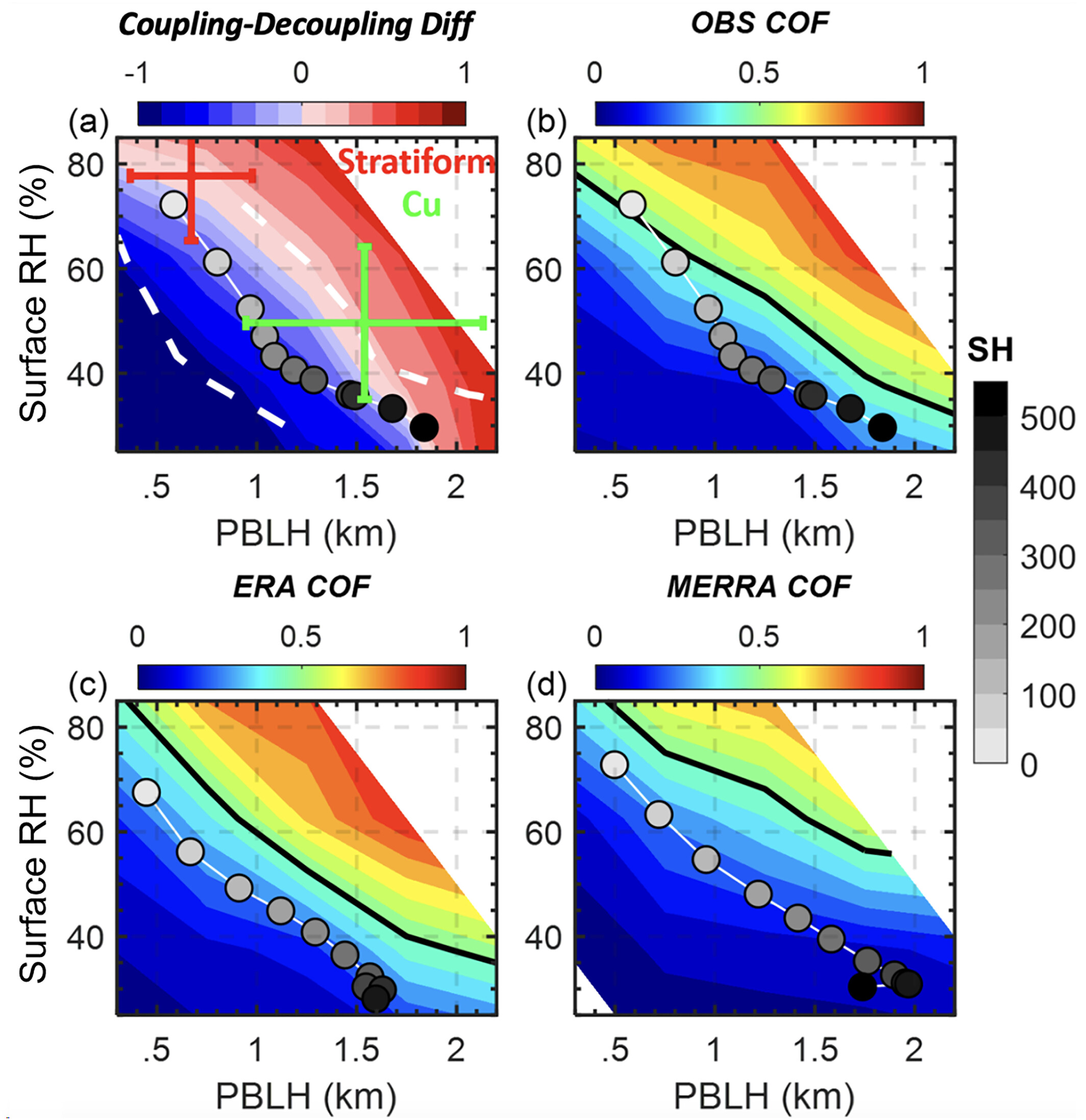Relationships between cloud and land surface fluxes across cumulus and stratiform coupling
Submitter
Su, Tianning — Lawrence Livermore National Laboratory
Li, Zhanqing — University of Maryland
Area of research
Cloud Processes
Journal Reference
Science
In our study, we systematically explored the multifaceted relationships between land surface fluxes and low-cloud formation across different cloud regimes. By analyzing merged data of the long-term ARM ground observations with coupling diagnostics, we identified distinct cloud-land interaction patterns contingent upon different coupling regimes and critically assessed the capabilities of reanalysis data sets in capturing these complex relationships.
Impact
This research enhances our understanding of how clouds with varying coupling regimes interact with land surfaces, enriching our comprehension of boundary-layer clouds. Previous studies concerning interactions between clouds and land focused primarily on shallow cumulus clouds; this study broadens the scope to include stratiform cloud regimes, providing a more comprehensive view of cloud evolution over land and laying the foundation for refined parameterization of cloud-land interactions.
Summary
Understanding the role of surface flux in interactions between low clouds and land surface is critical to comprehending the Earth's energy balance, yet their relationships remain elusive, with discrepancies between observations and modeling. Leveraging long-term field observations over the Southern Great Plains, this investigation demonstrated that cloud-land interactions are closely connected to cloud-land coupling regimes. A dual-mode interaction mechanism is revealed by analyzing the comprehensive ARM observational data: coupled stratiform clouds predominate in low-sensible-heat scenarios, while coupled cumulus clouds dominate in high-sensible-heat scenarios. Conventional reanalysis data sets obscure this dichotomy owing to a shortfall in representing boundary-layer clouds, especially in capturing the initiation of coupled cumulus in high-sensible-heat scenarios. This shortfall may undermine the application of reanalysis data in analyzing the interaction between clouds and land. Our study underscores the necessity of distinguishing different cloud coupling regimes, which is essential to the understanding of their interactions for advancing land-atmosphere interactions.


